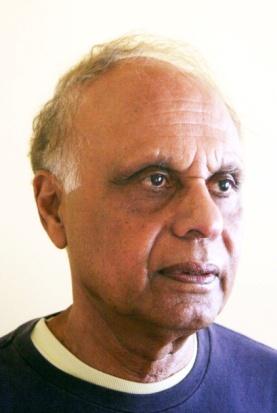Mir Mujibar Rahman
2013-06-22 21:13:49
1. Background
Distant learning is a method to bring knowledge to the learners/students from a distant place directly in lieu of the institute itself where the students assemble to learn from the teacher. The goal is to bring knowledge to the people virtually from any remote place rather than bringing the people to places where knowledge is available. For an ultimate learning experience and quality, the distant learning needs to be interactive. This can also be used as an additional tool to complement the teachers’ presence/teaching within the traditional institute.
Distant learning is now possible as today’s information technology allows knowledge to be transmitted to the students via the Internet or the dedicated network connecting several schools. Typically the curricula or the content is developed by the specialists. A teacher can be present to guide the students in the classroom initially. As the learning curve grows and the interactivity is perfected the role of teachers diminish.
Distant learning is particularly suitable for densely populated countries, where good teachers are scarce and the country’s education needs to ‘leap-frog’ at lower lifetime cost. It is ideal for a certain type of learning and age group where the students are less dependent on the teachers’ presence in the classroom and the teacher as a role model becomes secondary.
In today’s flat world the race for the future has become a key objective for many countries. Every participating country using the technologically advanced tools will have success, improve their capabilities, show the youth what is possible and share the wealth of the future. Some will excel others and lead the economy and improve their living standard more than the others.
Some of you may ask: what is this flat world and which are these countries participating in this race for the future? Is Bangladesh participating or what does Bangladesh need to do to be a viable contestant?
There was a time when someone invented a new technology or had an innovative idea or a country that possessed these ideas and implemented them, ruled the world for a very long time. We have seen these since the birth of mankind. Whether it is the Mayan, Chinese, Egyptian culture or Indian culture, whether it is the Roman or Islamic periods or in the last centuries English, French, German or American Industrial Revolution, we all see a similar trend: the nation and countries that have been innovative, hard-working and disciplined, they excelled in the world. ‘Made in Germany’ followed by ‘made in Japan’ became the trademark of the last century. Today, we see the addition of ‘made in Korea, China, India etc.’ Key to all their success is a good education. ‘Flat world’ has shortened the life cycle of technology, spurred innovation and has provided the far-away countries with the tools to leap-frog.
2. Why Bangladesh needs distant learning?
Bangladesh as a country has a choice: continue on the traditional path, rely on the current school system only and the current speed of teaching our youth. This choice may take many centuries to be among the top 20 nations of the world, as the other nations are also progressing and the difference in the rate of progress may become negligible in the traditional learning system.
We can also intelligently make choices that would allow us to ‘leap-frog’ and propel us to a higher level, empower our youth and bring out their potential.
Distant learning is one of these tools that can complement our traditional school system and increase the learning rate and experience.
Bangladesh is densely populated and its villages/towns are not in a position to attract highly qualified teachers. In addition, it is a well-known fact that to create a good institution it takes many years in addition to good teachers and sound financial conditions. Never the less, it is almost impossible to establish high-quality institutions uniformly spread throughout the country.
3. What is needed?
To implement distant learning the critical requirements are:
1. A well-functioning Internet is available first in all schools at ‘Thana’ level and then at all schools. To create such a fundamental network one needs roughly 8,000 km of the backbone of high-speed Fiber Optic Network and another 10,000 km of the local network in ‘Ring/Star’ configuration. Public/private initiatives are necessary to cover such cost.
2. Curricula, preferably like of IT education, science, mathematics or laboratory experimentations can be the first programs need to be developed by the educational specialists or use the content available in the Internet a la ‘Khan Academy’ of USA. Today many schools, colleges and universities have already implemented such programs successfully and can be used in Bangladesh via ‘joint co-operation’.
3. A teachers’ training program needs to be developed by the specialists, whereby the teachers can also be facilitator/administrator until interactive programs are fully implemented. Currently, programs based on ‘voice synthesizer’ are available to teach ESL (English as Second Language).
4. Initially, trained teachers need to be present in the class as the curricula is transmitted from the ‘Cloud’ to all schools and are also available on demand.
5. Evening adult ‘distant learning classes’ should also be conducted to teach any subject including preventive health-care, agricultural issues and basic family & business issues to have better informed parents and better return on investment.
4. Conclusion
During the recent visits to Bangladesh by the writer, it has become apparent that the lack of good institutions and qualified teachers outside the main cities. Students not enrolled in ‘high-quality institutions’ of the cities do not and cannot get the right education that can propel them to today’s need to compete in the world standard. Following the traditional learning system only, it would take 100 years + to establish good institutions uniformly throughout the country and attract qualified teachers, even if there were sufficient funding. Villages and towns cannot be transformed into attractive & efficient places rapidly enough without technological advanced tools.
Distant learning can bridge this gap, transform the society and reduce the burden on the district towns and large cities and their educational facilities, which are getting overpopulated, expensive and currently beyond the reach of the 80% of the population.
Copyright@Mir Mujibar Rahman



